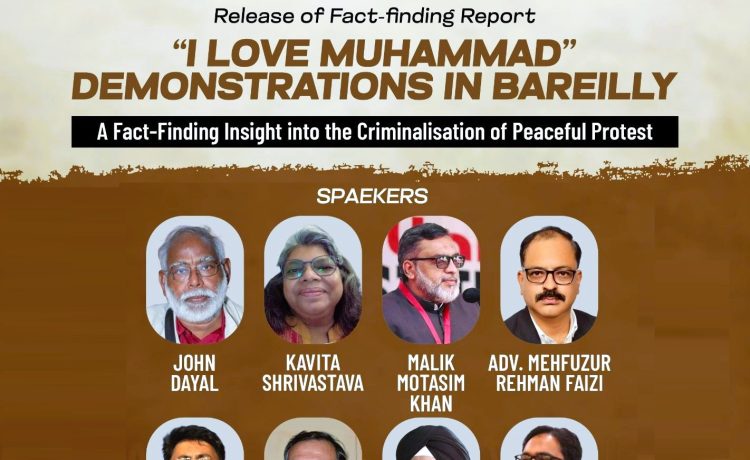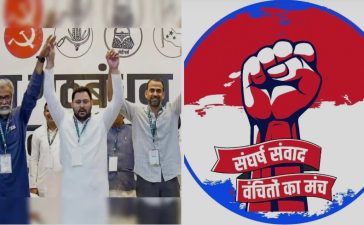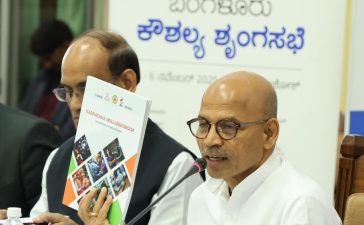Bareilly Unrest: Fact-Finding Report Alleges Collective Punishment, Criminalization of Faith
Fact-finding mission highlights arbitrary arrests, property demolitions, and systemic bias in police action following ‘I Love Muhammad’ protest
Fact-Finding Report by APCR
Bareilly, Uttar Pradesh: A recent fact-finding report by the Association for Protection of Civil Rights (APCR) has accused authorities in Uttar Pradesh’s Bareilly of “collective punishment” and “criminalization of faith” in response to a peaceful demonstration linked to the ‘I Love Muhammad’ campaign. The report, based on on-ground testimonies, legal analysis, and field observations, raises serious concerns about arbitrary arrests, disproportionate force, and the demolition of Muslim-owned properties without due process.
The findings center on a demonstration held on September 26, 2025, organized by Maulana Tauqeer Raza Khan, chief of the Ittehad-e-Millat Council (IMC), who sought to submit a memorandum to local officials in solidarity with Muslims in Kanpur. The Kanpur controversy had erupted earlier when police filed an FIR against organizers who displayed a banner reading “I Love Muhammad” during Barawafat celebrations.
From Kanpur to Bareilly: How a Peaceful Campaign Became a Flashpoint
According to the report, the controversy began in Kanpur’s Rawatpur area, where a light board displaying “I Love Muhammad” was installed as part of routine Eid Milad-un-Nabi celebrations. Right-wing groups opposed it, prompting the police to intervene — but instead of acting against the instigators, they asked the Muslim organizers to remove the banner. When Muslims later protested the FIR registered against them, similar demonstrations of solidarity emerged in several cities, including Bareilly.
Between September 10 and October 7, authorities across Uttar Pradesh filed 45 FIRs in 23 cities, booking 4,505 Muslims — of whom 265 were arrested. “It was in this climate of suppression,” the report states, “that Maulana Tauqeer Raza decided to submit a memorandum to the district administration.”
The Bareilly protest, however, quickly turned into a law-and-order flashpoint. The police claimed that sections of the crowd resorted to violence and stone pelting, injuring several officers. But the fact-finding team’s review paints a very different picture.
Contradictory Signals and the Police Crackdown
The report reconstructs the timeline leading up to the unrest. The Bareilly administration had denied permission for the protest, and on September 25, the IMC issued an advisory asking followers not to assemble. However, a late-night message circulated on WhatsApp dismissed the advisory as fake, confusing supporters.
On September 26, after Friday prayers, large numbers gathered outside Ala Hazrat Dargah and the cleric’s residence carrying “I Love Muhammad” placards. “Around 90–95% of the crowd dispersed peacefully,” the report notes, “but a small faction allegedly clashed with the police.”
Lawyers interviewed during the fact-finding visit said the police used force without warning. “Videos clearly show that people were walking peacefully. Suddenly, the police began a lathi charge without any announcement,” said Armand, a local advocate. “The officers, in an attempt to assert authority, acted excessively and irresponsibly, creating panic instead of maintaining order.”
By nightfall, ten FIRs had been filed, naming more than 2,000 people — including Maulana Tauqeer Raza, who was later arrested along with eight others and remanded to judicial custody. Internet services were suspended across Bareilly division for 48 hours, and special police forces were deployed in Muslim-majority localities.
Media Updates: +91-93531 21474 [WhatsApp] | indianowme@gmail.com
FIRs, Legal Overreach, and “Criminalizing Dissent”
The APCR report describes the FIRs as “vague, repetitive, and exaggerated,” often copied across police stations. Many sections invoked — including 132 (offences against the State) and 302 (murder) — carry the gravest penalties under the new Bharatiya Nyaya Sanhita, even though no deaths occurred.
“This excessive criminalization,” the report argues, “turns a constitutionally protected act of expression into a criminal offense for an entire community.” The team also found that copies of FIRs were not provided to detainees or their families, and that arrests were carried out without informing them of charges or grounds for detention.
One lawyer told investigators that “FIRs were filed eight hours after the incident, and people were picked up from homes without documentation. Even we, as lawyers, were denied access to the FIR copies.”
The analysis concludes that the FIRs exaggerate facts and misrepresent a peaceful gathering as a riot, with the language describing the crowd as a “mob” rather than individuals. “It’s a classic tactic,” said a Bareilly-based activist, “to instill fear and keep residents under pressure by keeping FIRs open-ended.”
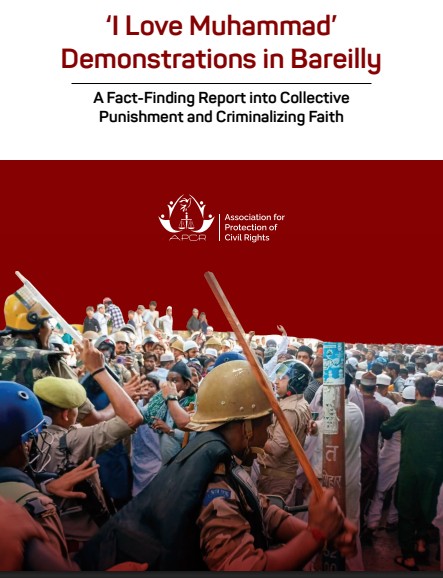
Bulldozers and Sealed Shops: The New Face of Retribution
In the days following the protest, the crackdown extended from people to properties. On September 29, authorities sealed 32 shops in Mazaar Pehalwaan Market — a registered Waqf property — without prior notice. “We were given two hours to vacate our shops,” said Saul, a tenant. “There was no written order, only fear. Police told us to take our belongings and leave.”
The market, the report notes, is under litigation between the Bareilly Nagar Nigam and the Waqf Board, and a stay order from the Waqf Tribunal was already in force. “The sealing was illegal,” the report asserts, “and amounted to collective punishment.”
Days later, the Raza Palace banquet hall, owned by a close aide of the cleric, was bulldozed under heavy police guard. Several other properties belonging to Muslims, including councillor Abdul Qayyum Khan’s home and an e-rickshaw station linked to the cleric’s family, were sealed or demolished.
A petition before the State Human Rights Commission has since challenged these demolitions, calling them “punitive acts without notice or hearing.”
Arrests, Fear, and the Silencing of a Community
As of October 8, at least 89 people had been arrested in connection with the Bareilly unrest, with cash rewards announced for seven absconding individuals. Local lawyers estimate the number could rise as police continue to pick up residents, including minors.
Salamon, uncle of one detainee, recounted: “My nephew Zaden was sleeping at home when police came and took him away. They gave no reason, no paper, nothing. He hadn’t even attended the Friday prayer.”
The report describes Muslim neighborhoods as “tense, silent, and heavily policed,” contrasting with the “normalcy of Hindu-majority areas.” One team member wrote in their field notes, “The air was still in Muslim localities — people were afraid to step out. But just a few streets away, life continued as usual.”
Systemic Pattern of Suppression
The APCR’s findings point to a broader pattern of state overreach — where peaceful assertion of religious identity by Muslims is met with aggressive policing, arbitrary detentions, and administrative retaliation. “This is not about law and order,” the report concludes. “It’s about using the law to intimidate.”
The report recommends that the Uttar Pradesh government facilitate dialogue with community representatives, that the NHRC investigate human rights violations, and that disciplinary action be taken against officers who ordered illegal arrests and demolitions. It also calls for the immediate release of those detained without due process.
A City Divided
The Bareilly unrest has exposed deep communal and institutional fault lines. For many residents, the events of late September were less about a slogan and more about the right to exist without fear. As one advocate observed, “When love for the Prophet becomes a criminal act, what remains of our freedom of faith?”
For now, Bareilly remains under a blanket of silence — its markets subdued, its youth anxious, and its faith under scrutiny. The question that lingers, however, is whether justice will follow the bulldozers. 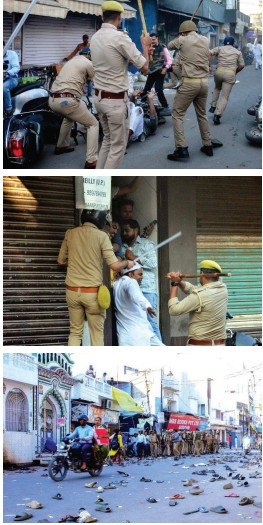
2025 | India Now | Media Updates: +91-93531 21474 [WhatsApp] | indianowme@gmail.com
Disclaimer
The entire content, data, and findings presented in this article have been supplied by the Association for Protection of Civil Rights (APCR) as part of its fact-finding report. INDIA NOW Web Portal has neither conducted the investigation nor verified the claims independently. The views, statements, and conclusions expressed herein are solely those of APCR and do not necessarily reflect the position or opinion of INDIA NOW or its editorial team.
![]()

